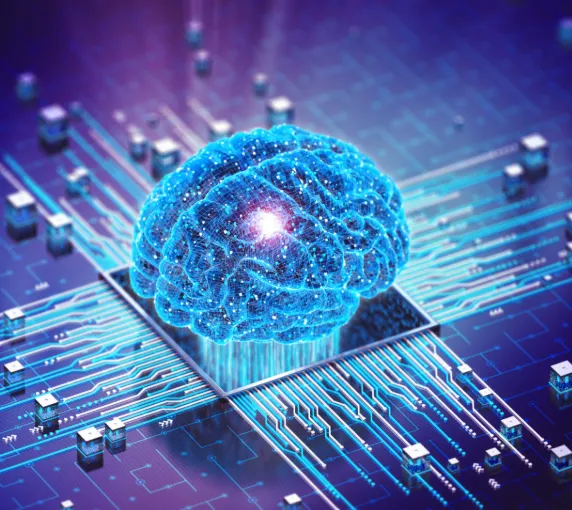Artificial intelligence (AI) is rapidly shaping the future, from enhancing personal gadgets to revolutionizing entire industries. But how do machines manage to learn and perform tasks that once seemed exclusively human? The answer lies in AI model training, a process that allows machines to recognize patterns, make decisions, and complete complex tasks.
At its core, training AI models is similar to how humans learn. By feeding the system large volumes of data and guiding it through specific tasks, AI learns to perform functions like identifying objects or predicting trends. In this post, we’ll explore the process of training AI models, explain its importance, and show how it helps unlock the full potential of AI.
What Are AI Models?
Imagine a child learning to recognize different animals. At first, they need guidance—pictures of animals, their names, and explanations. Over time, they start identifying animals on their own. AI models function similarly, but instead of a child learning animals, they’re computational systems learning to perform specific tasks. These models rely on algorithms and mathematical functions to process data, but the raw code alone can’t perform tasks until it is trained with real-world data.
Training these models allows them to learn patterns, make informed decisions, and carry out complex functions. Without training, AI would lack the ability to execute any meaningful tasks.
The AI Training Process
Training an AI model isn’t a one-step process—it involves several stages, each playing a vital role in creating a capable AI system.
1. Data Collection and Preparation:
Data is the lifeblood of AI. Whether it’s images, text, videos, or other types of data, AI models require large quantities of high-quality data to learn effectively. The data must be cleaned, organized, and labeled correctly to ensure the model learns from the best possible information.
2. Algorithm Selection:
Different tasks require different approaches. For instance, image recognition often uses convolutional neural networks (CNNs), while text-based tasks might use recurrent neural networks (RNNs). Data scientists choose the algorithm that’s most suitable for the task at hand.
3. Feeding the Data:
Once the data is ready and the right algorithm is chosen, the data is input into the model. The AI begins to adjust its internal settings to better interpret the data, much like how a child gradually refines their understanding with more exposure. This iterative process continues until the model becomes proficient at recognizing patterns within the data.
4. Evaluation and Fine-Tuning:
After training, the model’s performance is tested on data it hasn’t seen before. This step ensures the model can generalize well, making it useful for real-world applications. If necessary, the model is fine-tuned by adjusting its parameters or retraining it with new data.
Why is AI Model Training Essential?
Training AI models is vital for several reasons:
1. Accuracy and Reliability:
A well-trained AI model can make accurate predictions and perform tasks efficiently. For example, in healthcare, an AI trained on medical data can assist doctors in diagnosing illnesses, potentially leading to earlier treatments and better outcomes.
2. Continuous Adaptation:
AI doesn’t stop learning. As new data becomes available, models can continue to improve their performance. This is particularly important in dynamic fields like fraud detection, where patterns constantly evolve, requiring models to stay current.
3. Unlocking AI’s Full Potential:
Proper training enables AI to handle complex tasks that would otherwise be impossible for humans or traditional systems. From automating mundane tasks to generating innovative solutions, AI can transform industries, provided it has been trained well.
Emerging Trends in AI Model Training
As AI technology advances, so do the methods used to train models. A few exciting trends are shaping the future:
1. Automated Machine Learning (AutoML):
AutoML tools help automate parts of the training process, making it easier for developers to build and deploy AI models without needing deep expertise in machine learning.
2. Explainable AI (XAI):
Explainable AI techniques focus on making AI’s decision-making process transparent. This helps build trust in AI systems by ensuring their decisions can be understood and justified, especially in critical sectors like healthcare and finance.
3. Transfer Learning:
Transfer learning allows AI models to apply knowledge gained from one task to another, speeding up the training process and reducing the amount of data required. This makes developing new AI applications faster and more resource-efficient.
The Future of AI Model Training
AI model training is at the heart of building smart systems that can improve and adapt over time. As technology progresses, training methods will evolve, making AI more powerful and accessible. The potential of AI is vast, and with ongoing innovations in model training, the future holds even greater possibilities for what AI can achieve.
In summary, training AI models is a foundational element of AI development. It allows AI systems to go beyond simple data processing and make intelligent, informed decisions that can transform industries and improve lives. As training techniques continue to evolve, we can look forward to even more sophisticated, efficient, and reliable AI systems in the future.







